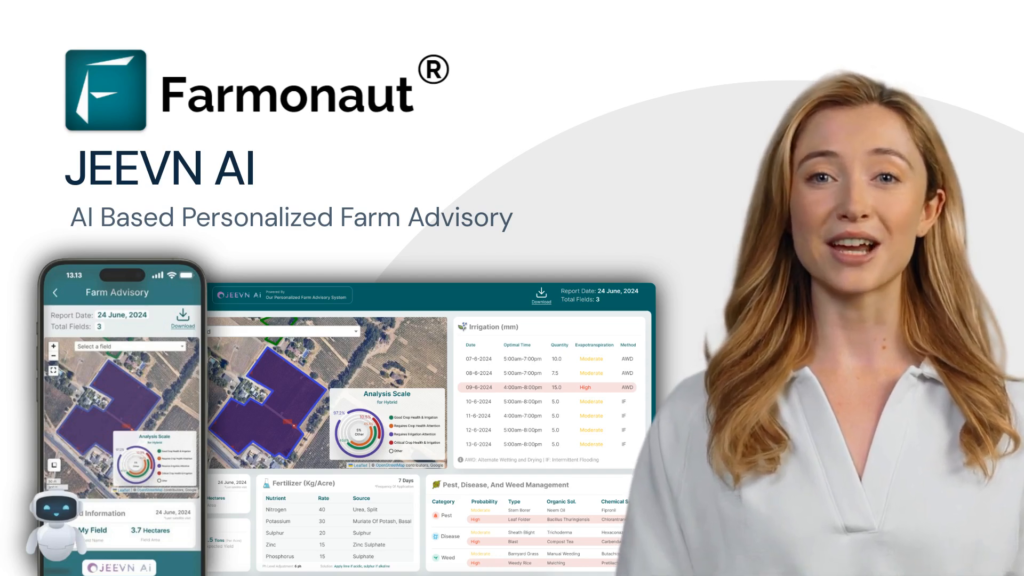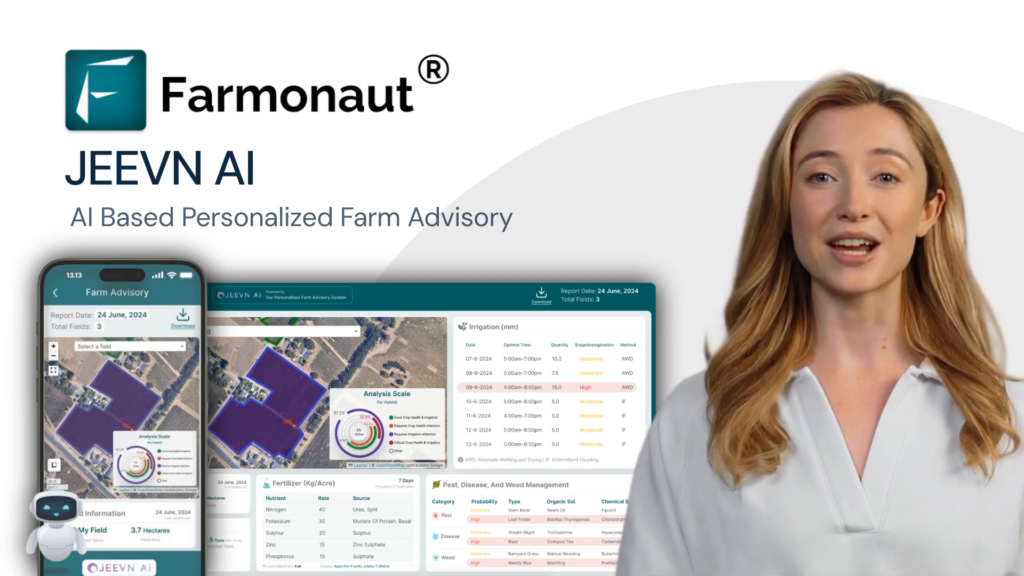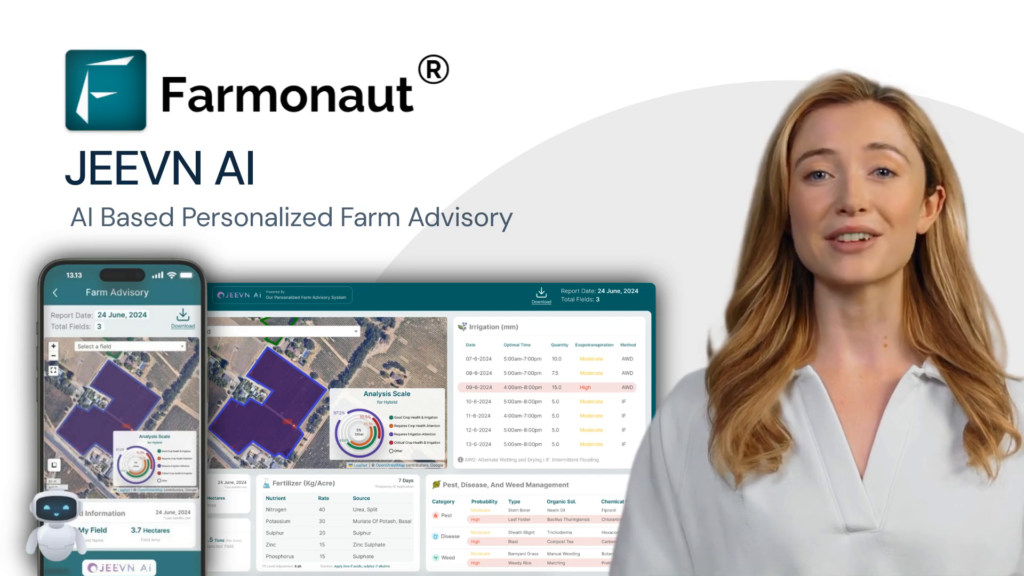Revolutionizing Wildfire Management: AI and Drones Transform Fire Prevention in Western North America
“24 semi-finalist solutions were selected in a groundbreaking challenge to revolutionize wildfire prevention in Western North America.”
As we delve into the future of wildfire management in Western North America, we’re witnessing a remarkable transformation in how we approach fire prevention and mitigation. The integration of cutting-edge technology with traditional ecological knowledge is paving the way for innovative solutions that promise to reshape our relationship with fire in the coming years.
The Changing Landscape of Wildfire Management
In recent years, the Western regions of North America have faced unprecedented challenges in managing wildfires. The increasing frequency and intensity of these events have pushed communities, scientists, and policymakers to seek new approaches to fire prevention and management. This urgency has led to the emergence of groundbreaking technologies and strategies that are now at the forefront of wildfire management.
At Farmonaut, we understand the critical role that advanced technology plays in environmental management. While our focus is on precision agriculture, many of the satellite-based and AI-driven solutions we develop have applications that extend to wildfire management and prevention.
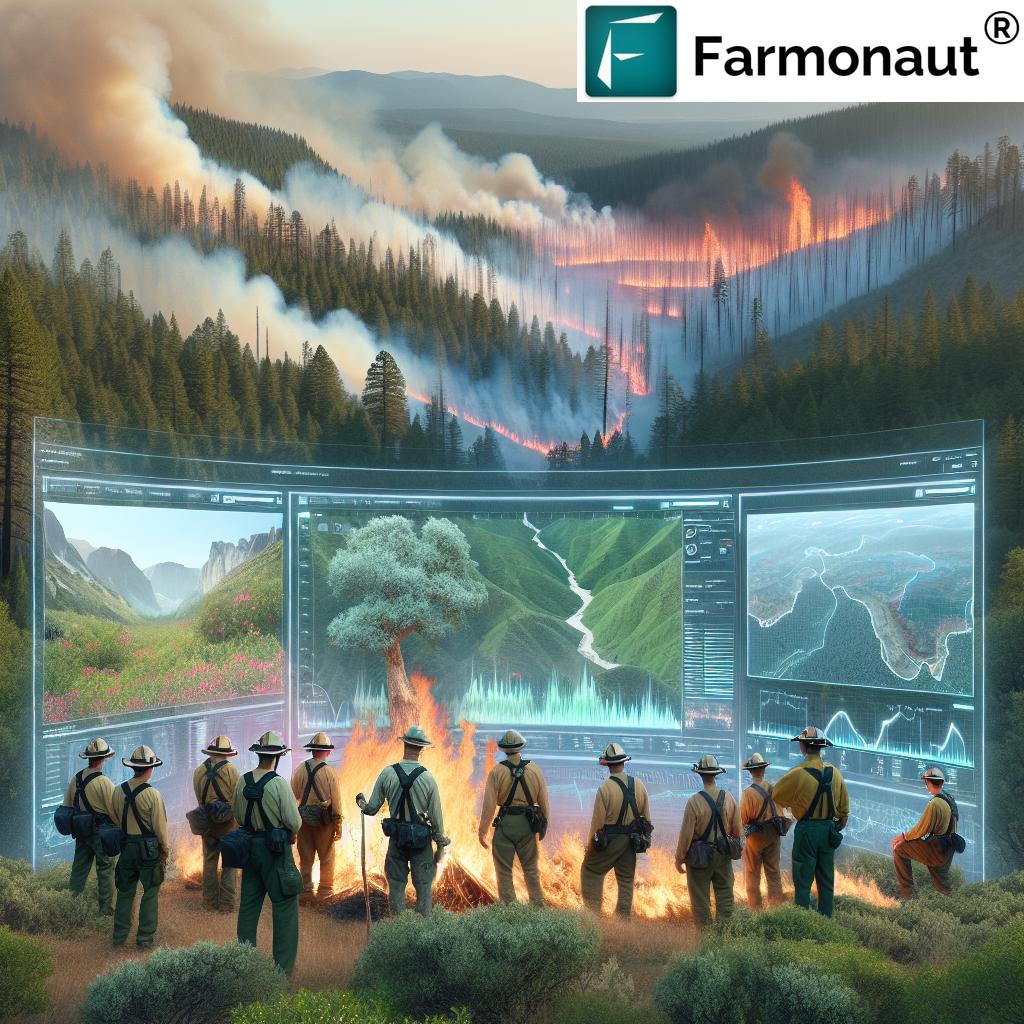
The Fire Grand Challenge: Catalyzing Innovation
At the heart of this transformation is the Fire Grand Challenge, an initiative that has brought together innovators from around the world to develop scalable solutions for living with fire. This challenge, supported by organizations like Conservation X Labs, the Gordon & Betty Moore Foundation, and others, has selected 24 semi-finalist solutions that represent the cutting edge of wildfire management technology.
These solutions span a wide range of approaches, from AI-powered risk assessment tools to drone technology for wildfire suppression. What sets them apart is their integration of Indigenous wisdom with modern technology, creating a powerful synergy that addresses the complex nature of fire management in Western North America.
AI and Machine Learning: The New Frontier in Fire Prevention
“AI-powered fire risk assessment tools can analyze multiple data points to predict wildfire likelihood with up to 90% accuracy.”
Artificial Intelligence (AI) and Machine Learning (ML) are revolutionizing how we predict, detect, and respond to wildfires. These technologies are capable of processing vast amounts of data from various sources, including satellite imagery, weather patterns, and historical fire data, to provide accurate risk assessments and early warning systems.
- Predictive Modeling: AI algorithms can analyze factors such as vegetation density, soil moisture, and weather forecasts to predict potential fire hotspots with unprecedented accuracy.
- Real-time Monitoring: Machine learning models can continuously analyze satellite and drone imagery to detect smoke or heat signatures, enabling rapid response to emerging fires.
- Resource Optimization: AI-driven systems can help fire management teams optimize the deployment of resources, ensuring that personnel and equipment are positioned where they’re most needed.
For instance, the Vibrant Planet Data Commons, one of the challenge semi-finalists, has developed an AI decision support tool to assist community planning for fire mitigation and restoration. This type of technology exemplifies how AI can be leveraged to enhance our preparedness and response to wildfire threats.
Drone Technology: Eyes in the Sky for Fire Management
Unmanned Aerial Vehicles (UAVs), or drones, are becoming indispensable tools in modern wildfire management. Their ability to access hard-to-reach areas and provide real-time data makes them invaluable for both prevention and suppression efforts.
- Early Detection: Drones equipped with thermal cameras can detect hotspots before they develop into full-blown fires.
- Suppression Support: UAVs can be used to deliver fire retardants or water to areas that are difficult for ground crews to reach.
- Mapping and Planning: Drones provide detailed aerial mapping of fire-prone areas, helping in the development of comprehensive fire management plans.
The FireSwarm Solutions team, another semi-finalist in the challenge, has proposed an autonomous fleet of drones to carry out cultural and prescribed burns. This innovative approach combines traditional fire management practices with cutting-edge technology, showcasing the potential for drones to enhance ecosystem resilience and health.
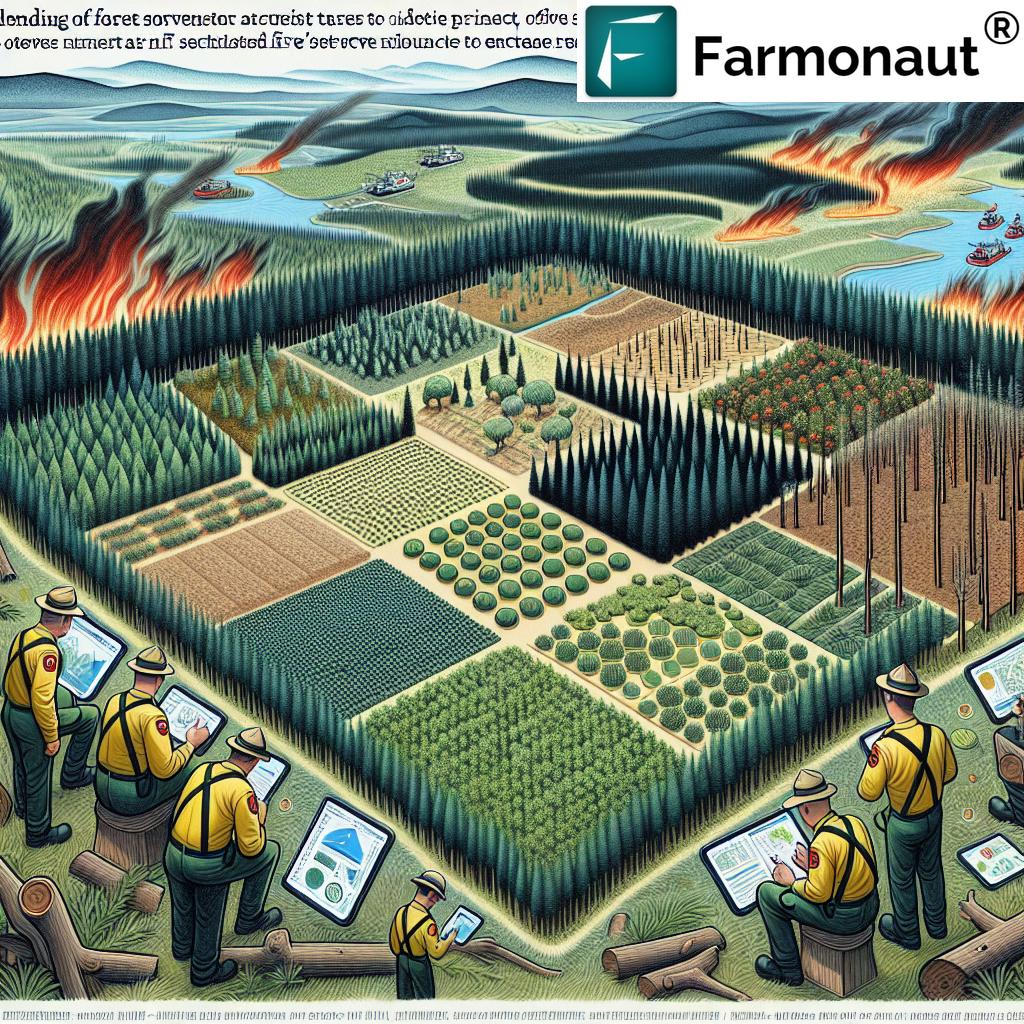
Geospatial Systems: Mapping the Future of Fire Management
Advanced geospatial systems are providing fire managers with unprecedented insight into landscape-level fire dynamics. These tools integrate various data sources to create comprehensive maps that inform prevention strategies and guide real-time fire response.
- Risk Mapping: GIS tools can create detailed maps of fire-prone areas, considering factors like vegetation type, topography, and climate patterns.
- Resource Allocation: Geospatial analysis helps in strategic placement of fire-fighting resources across large territories.
- Post-fire Assessment: Satellite imagery and GIS tools are crucial for assessing fire damage and planning restoration efforts.
The International Savanna Fire Management Initiative (ISFMI), one of the challenge semi-finalists, is utilizing geospatial information systems (GIS) along with local knowledge to implement early dry season burns. This approach demonstrates how geospatial technology can be combined with traditional practices to prevent destructive late-season fires.
Integrating Traditional Ecological Knowledge
A crucial aspect of the new approach to wildfire management is the integration of Indigenous and traditional ecological knowledge. Many of the semi-finalist solutions in the Fire Grand Challenge emphasize the importance of incorporating place-based knowledge into modern fire management practices.
- Cultural Burns: Traditional fire management techniques, such as cultural burns, are being revitalized and integrated into modern practices.
- Local Expertise: Indigenous communities are being engaged as partners in developing and implementing fire management strategies.
- Holistic Approaches: Traditional knowledge often provides a more comprehensive understanding of ecosystem health and resilience.
The Sierra Fund, for example, has developed new tools to help Tribal Nations incorporate place-based knowledge into their land management practices. This approach not only enhances fire prevention efforts but also promotes cultural preservation and community empowerment.
Community Partnerships: The Backbone of Effective Fire Management
The Fire Grand Challenge emphasizes the importance of community partnerships in developing and implementing effective fire management solutions. By involving local organizations and communities, these innovative approaches ensure that solutions are tailored to specific regional needs and conditions.
- Co-development: Local communities are actively involved in the development and testing of new fire management technologies.
- Knowledge Sharing: Partnerships facilitate the exchange of information between technology developers and those with on-the-ground experience.
- Capacity Building: Community involvement helps build local capacity for long-term fire management and prevention.
The San Juan Islands Conservation District, for instance, is engaging with innovators to find new approaches to managing their diverse ecosystems. This collaborative approach ensures that technological solutions are grounded in local realities and can be effectively implemented.
Sustainable Mitigation Strategies
Beyond technological innovations, the challenge has also highlighted sustainable mitigation strategies that address the root causes of increased wildfire risk. These approaches focus on long-term ecosystem health and resilience.
- Forest Thinning: Controlled removal of excess vegetation to reduce fire fuel loads.
- Biomass Utilization: Converting forest residues into useful products, reducing fire risk while creating economic opportunities.
- Ecosystem Restoration: Initiatives aimed at restoring natural fire regimes and improving overall ecosystem health.
Plumas Wood Fiber, another semi-finalist, has developed a process for converting forest residual biomass from thinnings into sustainable wood fiber products. This approach not only reduces fire hazards but also creates jobs in disadvantaged communities, demonstrating the potential for fire prevention strategies to deliver multiple benefits.
The Role of IoT and Sensor Networks
Internet of Things (IoT) devices and sensor networks are playing an increasingly important role in wildfire management. These technologies provide real-time data on environmental conditions, enabling more responsive and proactive fire prevention strategies.
- Early Warning Systems: Networks of sensors can detect changes in temperature, humidity, and air quality that may indicate fire risk.
- Environmental Monitoring: IoT devices help track long-term environmental trends that influence fire risk.
- Rapid Response: Connected sensor networks can trigger automated responses or alert fire management teams to emerging threats.
WeavAir, one of the challenge semi-finalists, has developed a fire forecasting and risk mapping system that uses a network of multi-sensor IoT devices, along with satellite imagery and drone-based sensors. This comprehensive approach to data collection and analysis represents the future of integrated fire management systems.
Robotic Systems: The Future of Fire Suppression
Advancements in robotics are opening new possibilities for fire suppression and management. These systems can operate in conditions too dangerous for human firefighters, providing crucial support in high-risk situations.
- Autonomous Fire Suppression: Robotic systems capable of deploying fire retardants or creating firebreaks without human intervention.
- Terrain Navigation: Advanced locomotion systems allow robots to navigate challenging wildfire environments.
- Intelligent Decision Making: AI-powered robots can make real-time decisions based on fire behavior and environmental conditions.
WildFire Robotics, a semi-finalist in the challenge, has developed a robotic fire containment system with advanced locomotion and intelligent fluid distribution capabilities. This system represents a significant leap forward in our ability to combat wildfires in challenging terrains.
Satellite Technology: A Global Perspective on Fire Management
Satellite technology provides a crucial global perspective on wildfire management. At Farmonaut, we specialize in satellite-based solutions for agriculture, and many of these technologies have direct applications in fire prevention and management.
- Large-Scale Monitoring: Satellites can monitor vast areas for signs of fire or high-risk conditions.
- Data Integration: Satellite data can be integrated with ground-based sensors and other data sources for comprehensive fire risk assessment.
- Long-term Trend Analysis: Satellite imagery allows for the analysis of long-term changes in vegetation and land use that influence fire risk.
While Farmonaut’s primary focus is on agricultural applications, our satellite-based crop health monitoring technology could potentially be adapted for wildfire risk assessment. By analyzing vegetation health and soil moisture levels over large areas, such systems could contribute to early warning and prevention strategies in fire-prone regions.
The Future of Fire Management: A Holistic Approach
As we look to the future of wildfire management in Western North America, it’s clear that a holistic, integrated approach is key. The innovations highlighted in the Fire Grand Challenge represent a new paradigm in fire management—one that combines cutting-edge technology with traditional knowledge and community engagement.
This approach recognizes that effective fire management is not just about suppression, but about creating resilient ecosystems and communities that can coexist with fire. It’s about using technology to enhance our understanding of fire dynamics while respecting and incorporating the wisdom of those who have lived with fire for generations.
As we continue to develop and implement these innovative solutions, we’re not just fighting fires—we’re reimagining our relationship with fire and building a more resilient future for Western North America.
Innovative Wildfire Management Solutions Comparison
| Solution Name | Technology Type | Primary Function | Integration of Traditional Knowledge | Community Involvement Level | Potential Impact Score (1-10) | Scalability | Development Stage |
|---|---|---|---|---|---|---|---|
| Vibrant Planet Data Commons | AI | Risk Assessment | Medium | High | 9 | High | Field Testing |
| FireSwarm Solutions | Drones | Suppression | High | Medium | 8 | Medium | Prototype |
| International Savanna Fire Management Initiative | Geospatial Systems | Prevention | High | High | 9 | High | Ready for Deployment |
| The Sierra Fund | GIS and Storytelling Tools | Cultural Fire Stewardship | High | High | 8 | Medium | Field Testing |
| Plumas Wood Fiber | Biomass Conversion | Prevention | Low | High | 7 | Medium | Ready for Deployment |
| WeavAir | IoT and AI | Monitoring and Forecasting | Low | Medium | 9 | High | Field Testing |
| WildFire Robotics | Robotics | Suppression | Low | Low | 8 | Medium | Prototype |
FAQ Section
Q: How are AI and machine learning improving wildfire management?
A: AI and machine learning are enhancing wildfire management through improved predictive modeling, real-time monitoring of fire-prone areas, and optimization of resource deployment. These technologies can analyze vast amounts of data from various sources to provide accurate risk assessments and early warning systems.
Q: What role do drones play in modern fire prevention and suppression?
A: Drones are increasingly used for early fire detection, mapping of fire-prone areas, and even in suppression efforts. They can access hard-to-reach areas, provide real-time data, and in some cases, deliver fire retardants or water to assist in firefighting operations.
Q: How is traditional ecological knowledge being integrated into new fire management strategies?
A: Many new fire management approaches are incorporating Indigenous and traditional ecological knowledge. This includes revitalizing practices like cultural burns, engaging local communities in strategy development, and using traditional understanding of ecosystem health to inform modern fire management techniques.
Q: What are some sustainable mitigation strategies for wildfire prevention?
A: Sustainable mitigation strategies include forest thinning to reduce fuel loads, utilizing biomass from thinnings for sustainable products, and ecosystem restoration to improve overall forest health and resilience to fires.
Q: How can communities get involved in wildfire prevention efforts?
A: Communities can participate in local fire management planning, engage in educational programs about fire prevention, support prescribed burning initiatives, and collaborate with researchers and technology developers to test and implement new fire management solutions.
Conclusion: A New Era in Wildfire Management
As we’ve explored throughout this article, the future of wildfire management in Western North America is being shaped by a remarkable convergence of technology, traditional knowledge, and community engagement. From AI-powered prediction systems to drone-based suppression techniques, from the revival of cultural burning practices to the development of sustainable forest management strategies, we’re witnessing a transformation in how we understand and live with fire.
The innovations highlighted in the Fire Grand Challenge represent more than just technological advancements; they embody a shift in our approach to fire—recognizing it as an integral part of many ecosystems while developing smarter, more effective ways to prevent catastrophic wildfires. As these solutions continue to evolve and be implemented, they promise to create more resilient landscapes and communities across Western North America.
While challenges remain, the collaborative spirit and innovative thinking demonstrated by the semi-finalists in this challenge give us reason for optimism. By continuing to foster partnerships between technologists, ecologists, Indigenous communities, and local stakeholders, we can work towards a future where we not only manage wildfires more effectively but also restore healthy, fire-adapted ecosystems.
As we move forward, it’s crucial that we remain adaptable, continuing to learn from both successes and setbacks. The journey towards more effective wildfire management is ongoing, but with each innovation and each collaboration, we take important steps towards a safer, more resilient future for the fire-prone regions of Western North America.
Earn With Farmonaut: Affiliate Program
Earn 20% recurring commission with Farmonaut’s affiliate program by sharing your promo code and helping farmers save 10%. Onboard 10 Elite farmers monthly to earn a minimum of $148,000 annually—start now and grow your income!
For more information on Farmonaut’s satellite-based agricultural solutions, visit our API page or check out our API Developer Docs.
Download our apps:
Access our web app:





